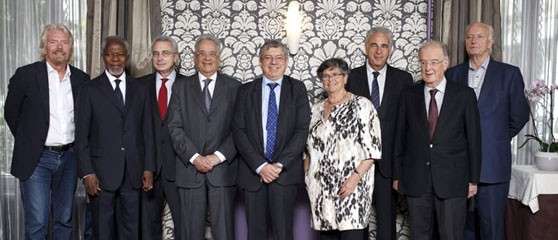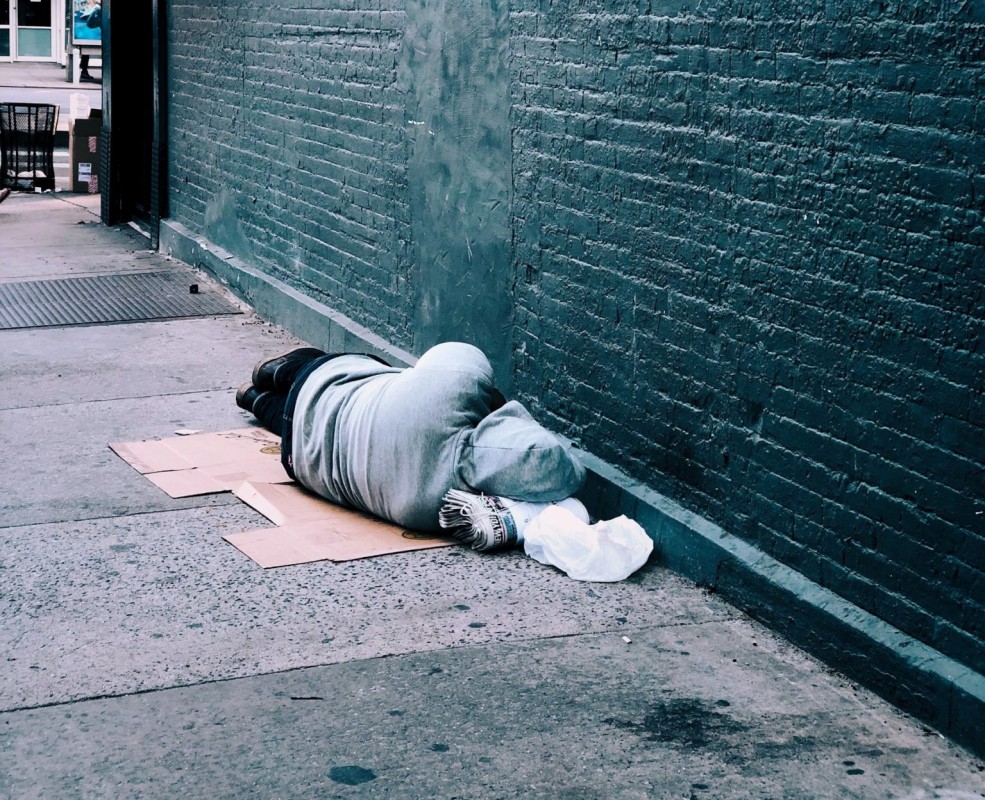In August 1978, guerrilla fighters from the Sandinista National Liberation Front stormed the National Palace in Nicaragua. Nicaragua had been a banana republic — one of those Third World, Latin American countries under the thumb of right-wing juntas and US corporations — ruled by the powerful Somoza clan, but no more. The following year President Somoza fled the country.
The United States, meanwhile, was in the grip of the so-called crack era. Stiffer sentences, trigger-happy cops playing Dirty Harry and the caging of human beings on an industrial scale for non-violent crimes largely hit African-Americans, and it’s no coincidence that powder cocaine was preferred by well-to-do white folks whereas crack was more widely available in working class black communities. While the War on Drugs had been raging for some time now, crack was a smokeable form of cocaine that gave a much more intense (and addictive) rush. In response, Ronald Reagan cranked the volume up to eleven, at one point blockading the entire Florida seaboard after watching too many episodes of Miami Vice.
In July 1984, photographs leaked of Sandinista officials loading a plane up with cocaine. Reagan went on TV to express his outrage— was there no crime those blasted commies wouldn’t stoop to? For Ronnie, this was the jackpot — the Cold War merged with the Drug War. Cuba was bad enough, but having another so-called Soviet pawn in the Western hemisphere was something he simply couldn’t abide.
Cocaine, cannabis and heroin weren’t always illegal. In fact, once upon a time opium was used to soothe crying babies. While everyone now agrees that was probably a bad idea, the War on Drugs as we know it is inextricably tied to US racism, imperialism and xenophobia.
In 1898, the United States relieved the Spanish crown of its colonial possessions in Cuba, Puerto Rico and the Philippines in the Spanish-American War. Then in 1905, missionaries in Manila spearheaded an anti-opium campaign, a thinly veiled attempt to expel Chinese immigrants (opium dens had already been banned in parts of the US, not because of public health policies, or clinical research, but because of racist scaremongering about the Chinese). Prohibition, that dry spell in the 1920s and 30s when alcohol was forbidden, was spurred on by WWI-era jingoism against Germans (as well as Italians and Irish). Later, amid the Red Scare of the 1950s, Federal Bureau of Narcotics chief Harry Anslinger claimed that dope money funded communist China. This was obviously fake news, but it wouldn’t be the last time the US tried to use the anti-drug crusade as a cover for its geopolitical ends.
To fight its war on inanimate objects Washington created the Drug Enforcement Administration, or DEA, and gave it jurisdiction to operate overseas. There are DEA outposts in Bogotá, Kabul, Mexico City, Bangkok and all around the world. Anywhere drugs may be, the DEA’s valiant agents will sniff them out.
While the Soviet Union, too, outlawed narcotics, it considered the matter of who sniffs what powder to knock them cockeyed a question each nation should decide for themselves. But thanks to Anslinger’s efforts at the UN, the US forced all other countries to sign up to its War on Drugs, bullying them with sanctions if they didn’t comply. Poorer countries like Jamaica, where ganja-smoking is part of their Rastafari heritage, had little choice.
But it was Latin America that felt the greatest impact of Washington’s self-appointed role as the world’s policeman. Cocaine comes from the leaves of the coca plant, which grows in the Andes of South America. Coca is not cocaine. Mate de coca, or coca tea, is just the same as regular tea except it tastes a little like Coca-Cola and helps with the altitude sickness. The native peoples of Bolivia and Peru, for whom coca-chewing is a tradition going back thousands of years, were suddenly told to cut it out. Imagine Germany and Belgium being ordered to stop drinking beer. No more Oktoberfest.
Anti-coca programs don’t go down too well in these parts. In 1982 after counternarcotics police assaulted the wife and daughter of a coca farmer in Bolivia’s Yungas province, an angry mob gathered and razed the police station, castrated and slaughtered the narcs inside. The remaining drug cops didn't dare set foot there for another five years. In 1986 it was the DEA's turn, and they too got routed by mobs wielding pitchforks and machetes. It wasn’t until 2008 under President Evo Morales, defiantly chewing a bag of coca leaves at the UN, that Bolivia finally kicked out the DEA and legalised coca.
That hasn’t stopped the agency’s adventures elsewhere. The DEA has authorisation to disrupt narcotics flows in source or transit countries if they can argue there’s even the slightest possibility that powder might find its way up the nose of little Timmy back home. In 2009, a joint operation was carried out with authorities in Liberia, West Africa, after the country’s national security chief, Fombah Sirleaf, was offered a deal by Colombian and Nigerian traffickers to move product through his borders. Fombah set up a sting operation with the DEA. A Nigerian, Chigbo Umeh, was arrested along with a Russian pilot, Konstantin Yaroshenko, even though there was no evidence they were planning to ship the white powder to the United States. Nevertheless, the men are now languishing in an U.S. prison cell, thousands of miles from home, for an alleged crime that had nothing to do with the U.S. criminal justice system.
The DEA even had its own special forces, the Foreign-deployed Advisory and Support Teams (FAST), that were disbanded in 2017 after video emerged of them taking part in a massacre of innocent villagers in Honduras. Imagine the Honduran cops flying over and taking potshots at some poor soccer moms outside Walmart.
But while supposedly being the world leader in the War on Drugs, the US government has worked hand-in-hand with drug traffickers. While Reagan raged about the Sandinistas, the CIA was allowing the Contras, anti-communist rebels fighting the Sandinistas, to flood the United States with cocaine. By the mid-80s, the boys on Capitol Hill were refusing to loosen those purse strings for what was essentially a brutal terrorist group. That’s when Lieutenant Colonel Oliver North hit upon the idea of illegally selling arms to Iran then sending the profits to the Contras, as well as allowing the Contras to smuggle cocaine which was cooked into crack and sold in the inner-city. We might never know the full extent of the scheme because North shredded the documents, but d’ya think the Agency could have helped run a covert war in Latin America that Reagan didn’t know about? In the end, of course, everyone involved got a get-out-of-jail-free card when the scandal blew up.
In Colombia, far-right paramilitary groups, which were responsible for the lion's share of deaths in the country’s civil war, inherited the coke business from Pablo Escobar. Washington ignored paramilitary abuses for years because the warlords were “on our side”, and supported the Colombian army against leftist rebels, de-facto siding with the paramilitaries. Billions of dollars in aid and Black Hawk helicopters poured into the country under Plan Colombia, while the CIA provided intel and precision-guided bombs to assassinate a rebel commander in Ecuador.
In Afghanistan, the warlords selling heroin were actually CIA assets. Juma Khan was closely connected to the Taliban, the Afghan government and Pakistani intelligence, but was paid by the CIA and the DEA for his help against the Taliban and even got a free trip to Washington and New York at the taxpayer’s expense. In 2008 he was nabbed by US agents in Jakarta and thrown in an American jail, but his case never went to trial and he was quietly released ten years later, with not a peep in the mainstream media.
So who are the winners in all this? Not the CIA, who for all their narco-funded terrorists lost the war in Nicaragua. Not the U.S. taxpayer, who has to dole out over 30k a year just to keep one forlorn Russian pilot fed, washed and unescaped from prison, let alone more African-Americans than were enslaved in 1850.
If you think about it, it’s kind of bizarre: how one country’s moral panic over others’ habits became a tool for world domination, dictating what’s right and wrong then breaking those very same rules once they get in the way. But here we are. It’s not just the U.S., of course — in recent years, China’s been playing the same role in the jungles of Southeast Asia – they only learned from the best.
You can argue this whole endeavour might have been worth it had it actually kept your thirteen-year-old son from getting spaced out of his mind on a three-day bender – but weed, cocaine and heroin are cheaper and purer now than ever before, and both global and U.S. drug policy continues to fail miserably at its own goal of a dope-free world.
Niko Vorobyov is a government-certified (convicted) drug dealer turned writer and author of the book Dopeworld, about the international drug trade. You can follow him @Lemmiwinks_III


